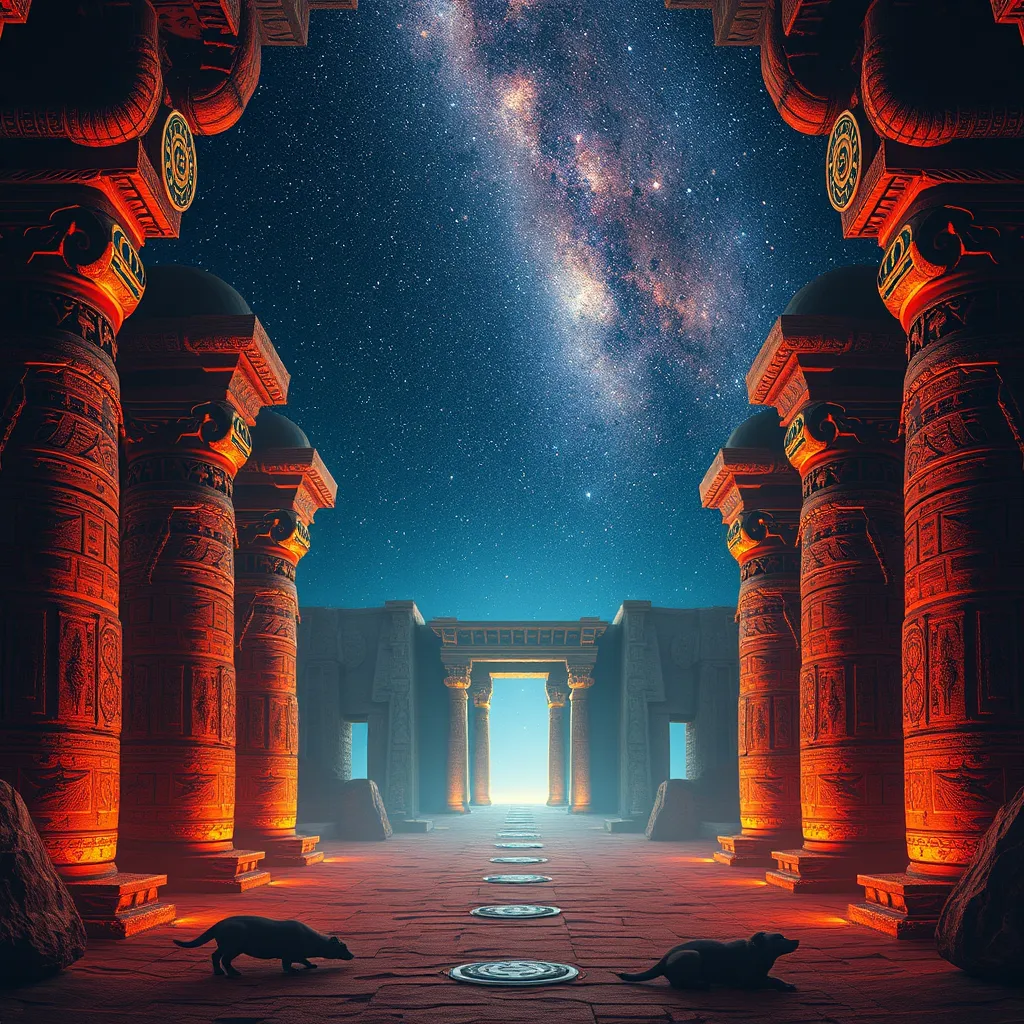The Duat: A Journey Through Time and Space
I. Introduction to the Duat
The Duat, often referred to as the realm of the afterlife in ancient Egyptian mythology, holds profound significance within the cultural and spiritual framework of ancient Egypt. It is not merely a place; it represents a complex journey of the soul post-mortem, filled with trials, deities, and a rich symbolic landscape. In essence, the Duat embodies both the fears and hopes of the ancient Egyptians regarding death and the afterlife.
II. Historical Context of the Duat
The concept of the Duat evolved significantly throughout ancient Egyptian history, reflecting the changing beliefs and values of the society. Initially, the Duat was seen as a shadowy realm filled with dangers and obstacles. However, as time progressed, it became a more structured and defined space, with various regions and deities governing its aspects.
Key texts such as the “Book of the Dead,” the “Coffin Texts,” and the “Pyramid Texts” provide essential insights into the understanding of the Duat. Artifacts like the sarcophagi of pharaohs are adorned with depictions and inscriptions related to the Duat, illustrating its central role in funerary practices and beliefs about the afterlife.
III. The Geography of the Duat
The geography of the Duat is rich and varied, comprising multiple landscapes that symbolize different aspects of existence and the afterlife. It is often depicted as a dark, watery expanse, reminiscent of the Nile at night, interspersed with islands and regions that serve specific purposes in the journey of the deceased.
- The Waters of Chaos: Representing the primordial state before creation, where the deceased must navigate through uncertainty.
- The Field of Reeds: A paradise-like area where the souls of the righteous reside in peace.
- The Hall of Judgement: The site where the weighing of the heart ceremony occurs, determining the fate of the deceased.
Each location within the Duat carries deep symbolism, reflecting the ancient Egyptians’ beliefs about life, death, and the cosmos.
IV. Deities and Spirits of the Duat
Central to the Duat are several deities who oversee various aspects of the afterlife and the journey of the soul. Among the most significant are:
- Osiris: The god of the afterlife and resurrection, often depicted as a mummified king.
- Anubis: The jackal-headed god who guides souls and presides over the embalming process.
- Ma’at: The goddess representing truth and justice, integral to the weighing of the heart.
In addition to these deities, numerous spirits and entities inhabit the Duat, each playing a role in guiding or challenging the soul on its journey.
V. The Journey Through the Duat
The journey through the Duat is a complex process that every soul must undergo after death. It begins with the soul’s departure from the body, followed by a series of trials and encounters with deities and spirits. The deceased must navigate various obstacles, including demons and serpents that threaten to consume the soul.
A pivotal moment in this journey is the weighing of the heart ceremony, where the heart of the deceased is weighed against the feather of Ma’at. This ceremony determines the soul’s fate:
- If the heart is lighter than the feather, the soul is deemed worthy and allowed to enter the Field of Reeds.
- If the heart is heavier, it is devoured by Ammit, a fearsome creature, leading to the eternal destruction of the soul.
VI. Symbolism and Themes in the Duat
The Duat is rich with symbolism, echoing the ancient Egyptian themes of life, death, and rebirth. It is a reflection of their worldview, where life on earth is seen as a preparatory phase for a more significant existence in the afterlife.
Key themes include:
- Life and Death: The Duat represents the transition from the physical world to the spiritual realm.
- Rebirth: The journey through the Duat is often likened to the cycle of the sun, symbolizing renewal and the hope of resurrection.
- Justice: The weighing of the heart underscores the importance of morality and ethical living in ancient Egyptian society.
VII. The Duat in Art and Literature
The Duat has been depicted in various forms of ancient Egyptian art, often illustrating the journey of the deceased and the deities encountered along the way. Tomb paintings and carvings serve as both artistic expressions and spiritual guides for the deceased, ensuring safe passage through the afterlife.
Literary references to the Duat, particularly in the “Book of the Dead,” have had a significant impact on later cultures’ interpretations of the afterlife. These texts not only recount the journey through the Duat but also provide spells and incantations to assist the deceased in navigating this perilous realm.
VIII. Conclusion: The Legacy of the Duat
The Duat’s legacy continues to influence modern interpretations of the afterlife and spiritual journeys. Its complex symbolism and rich mythology fascinate scholars, spiritual seekers, and enthusiasts of ancient cultures alike.
The enduring allure of the Duat lies in its profound exploration of themes that resonate across time—life, death, and the quest for eternal existence. As we delve into the mysteries of the Duat, we uncover not only the beliefs of ancient Egyptians but also insights into the human condition and our eternal search for meaning beyond this life.




